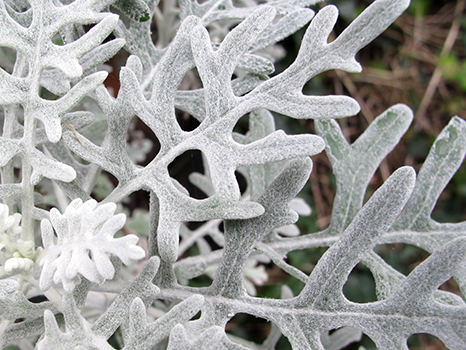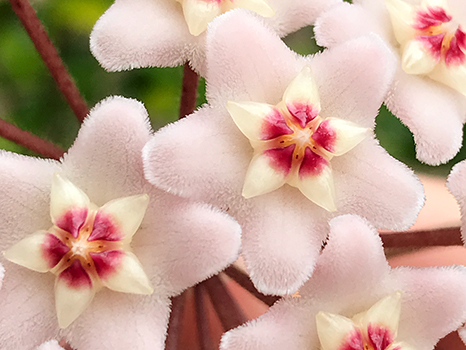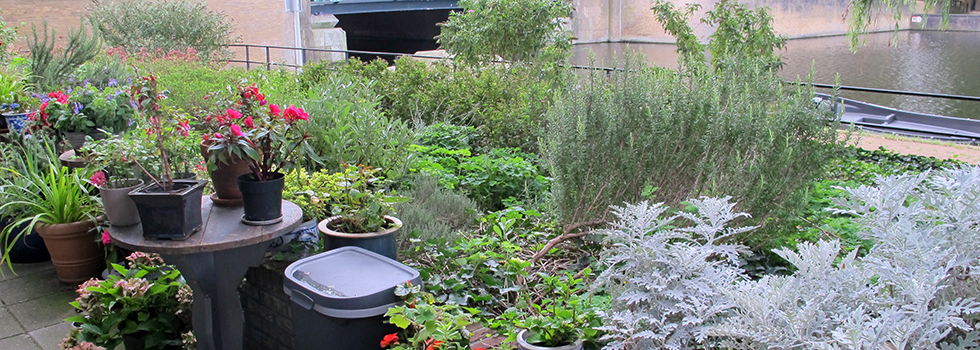Living space costs a lot in Amsterdam and having a large garden is a true rarity. But this doesn’t mean year round green space is impossible! As winter is approaching, Audrey Coggins looks at ways to keep the green in our lives, through the snow, sleet, rain, and frost.
In the Netherlands, the winters tend to be long, wet, cold, and gray. For me, that’s fine; I prefer the cool to the heat. My favourite days are those spent alone in my home, rain falling outside; there’s loads to do, but all within the confines of my orchids, my teas and my music. (#homebody)
I am originally from Malaysia where there are two seasons: humid/no-rain/hot and humid/loads-of-rain/hot. Basically it’s hot and sticky. Australia, where I spent my early adulthood, introduced me to seasonal gardening, which I grew to enjoy very much. I learned best-practices and tips to coax plants to reward my attention with blooms and fruit from the mother-in-law and the gardening gurus in Australia.
Now, living in Amsterdam, I am finding more opportunities to build upon my existing knowledge.
For instance, I learned that the hortensia (hydrangea) in the Netherlands do not need pruning to offer up a profusion of blooms. In Australia, gardeners know that to encourage best growth for the coming year, you arm yourself with pruners, a wheelbarrow and a large glass of red wine in autumn (April/May). Half an hour later, your verdant hydrangea bushes with late season blooms are reduced by over half their previous size and now resemble a bunch of sticks that were attacked by a toddler with a pair of scissors. But the (now slightly inebriated) gardener with the shaking hands walks away, knowing their hydrangea is poised for better things next spring/summer.
Pro Tip: go make friends with the older members of your local area who have thriving gardens. They love to educate us ‘young ones’ on life skills like gardening! *
The Winter Garden
Winter is a challenging time for the gardener. Everything appears to be sleeping and the garden looks a bit sad, to say the least, and here in Amsterdam, we don’t even get the constant snow that conceals our plants’ rather sorry apearance, but there is a bright side! I’ve realised that because so much of our housing in Amsterdam is in apartments and off the ground, nurseries and tuinwinkels here offer a very large range of indoor plants. And of course, many outdoor plants survive the winter with some forethought prep.
OUTDOORS
Olive standards are pretty. The leaves can be protected, although some leaf loss is unavoidable. So point one to olives! But frost needs to be avoided so place them against the wall or under a canopy. The leaves will naturally turn to face and reach for the sun, so the potted plants need to be rotated every few months to ensure equal growth all around. In the winter, if you do not have frost cover, you can purchase lightweight, light-transmitting cheesecloth-canvas to cover the plant. Read more here.
 Hydrangea don’t seem to lose their leaves here in the Netherlands over the winter, but they won’t produce blooms. I find I cannot help but prune and de-head mine though!
Hydrangea don’t seem to lose their leaves here in the Netherlands over the winter, but they won’t produce blooms. I find I cannot help but prune and de-head mine though!
Buxus are shrubs with tight, small, green leaves that are predominantly evergreen. These are popular hedge plants and feature most prominently as topiaries, as once they are established, buxus are easily shaped. English buxus grow slowly while the Japanese buxus are faster growers. (Note: I didn’t say they were fast… just faster than slow.)
Camellias are evergreen, winter flowering trees. Typically, camellias are short trees, so can be classified as a large bush. They produce a profusion of blooms in winter, and have some frost-resistance. They prefer being in the ground, but if you keep them pruned, narrow camellias can survive for 5-8 years in large pots.
Bamboo provides a handy hedge as a privacy screen in our apartment-filled city. Bamboo is rather winter-hardy and while it can suffer from frost damage, a well established and fertilised plant in the growing months will ensure a quick recovery. Looks best when planted en masse, but be warned, many strains are fast growers and do best planted in large trough pots. I love the soft, whimsical look that the fine, pale green leaves add to soften an outdoor space and hide unsightly fences.
Azaleas are pretty when they’re in flower. They are an early spring bloom too, which is great for container gardens. Remember to remove the dead blooms by hand.
Fatsia is a gorgeous green plant with large green maple-like leaves. They are primarily an indoor plant but will survive outside in the sunniest spot in winter. On patios, they can grow up to 3 metres high and do not require frost cover.
 Dusty Miller (silver ragwort) are plants that have attractive silver foliage. These are great to provide contrast to other greens and reds in your garden pots.
Dusty Miller (silver ragwort) are plants that have attractive silver foliage. These are great to provide contrast to other greens and reds in your garden pots.
Rosemary is really hardy once they’re established and don’t die off in winter. My tips on growing rosemary are to keep them in large container pots. To avoid a mature rosemary plant going woody, trim it often and be quite aggressive. The smaller branches make excellent kebab skewers and the leaves can be dried to add to your cooking.
Thyme is also another herb which will be fine left in container pots in your outdoor balcony. See above.
Salvia/sage is an excellent garnish in pasta dishes, when deep fried. Their pale green-silver foliage is attractive and the bushes are a pretty sight in container pots.
Butterfly bushes (buddleia) produce beautiful blooms of vibrant colour. They attract butterflies and bees are also attracted to the pollen. They are very winter hardy and look superb blooming en masse in the spring/summer months.
INDOORS
Indoors, we can still have our green. And blooms. I have my orchids and my ferns. One day, I hope to boast a 12 meter high fiddle fig leaf plant in the middle of my apartment (just like the one I spotted this past weekend in the atrium at Café De Plantage).
Most indoor plants will require a little more watering than normal because homes in Amsterdam tend to be heated for at least some part of the day. I always plunge my finger into the soil. If it’s dry, you’ll need to water.
Orchids. What I tend to do with my orchids in winter is one morning every week, I sit them in the plugged sink and let water pool in the bottom for about 15 minutes. (Remember to remove the plastic bucket that they often come in, from the planter, so that no water pools in the planter). The health of the orchid is in the roots. Keeping the roots green and plump but not sitting permanently in water is the way to encourage blooms throughout the year.
Other plants (e.g. ferns) prefer to have a little water in the bottom of the planter so that the roots can grow towards the water and take in water when needed. Your local garden shop should be able to advise you on this.
Chinese Money (Pilea peperomioides) plants are nice plants that stay evergreen. They don’t produce flowers, but offer your tabletop bang for your buck with their round, flat, green, wavy and thick leaves. These do not require fastidious watering. I water mine year-round every 10 days.
Banana Palm and Fiddle Fig Leaf are beautiful indoor trees that provide large green leaves. The great thing about plants in this range is that you’re able to fill a corner with interest without doing anything permanent when you’re renting. These plants have an architectural beauty and sculpture to them. Note that they don’t flower or fruit when kept indoors. You’ll also need to water them frequently.
Ferns are pretty space filler. (And they’re great for the environment because each small leaf is a CO2 sucker!). Sit them in the bottom of the plugged sink with 2-3cm of water. Great for hanging, great for plant stands, great for bathrooms, great for toilets.
 Hoya are climbers with medium sized thick, waxy leaves that produce pretty little star-shaped flowers. I’m a big fan of them. The varieties available with blooms are amazing. You can plant them outside, but they do not like frost.
Hoya are climbers with medium sized thick, waxy leaves that produce pretty little star-shaped flowers. I’m a big fan of them. The varieties available with blooms are amazing. You can plant them outside, but they do not like frost.
String of Pearls or String of Hearts These sweet little danglers are very trendy at the moment, but they have been a favourite of mine for some time. They thrive best when allowed to dangle down over the side of the pots, so they look spectacular in macrame hanging baskets or hanging pots. String of Pearls are succulents so require minimal watering, while the String of Hearts does require watering once a week. They do not flower, but the green round pearls add so much character, as do the little dark green leaves shaped like hearts.
Disclaimer: This is all from my own plant knowledge, which is clearly not exhaustive and I had to select plants from a long list of possibles for this article.
* Many thanks to Hans Oudmaijer who helped me with this list and added invaluable natice Dutch experience and insights.
Photo credits: All photos © Audrey Coggins
Audrey Coggins
Audrey Coggins is *that* Crazy Asian Lady. That one that is working to develop a strawberry and olive chiffon cake recipe that wins. That one that doesn't take herself seriously - by choice. She has been Amsterdam Mama's Chief Copy Editor, sometime-Content Manager, and currently is working on being a illustrator.






